Seasoning a carbon steel pan in the oven is a crucial step to develop a natural, non-stick surface and enhance its performance over time.
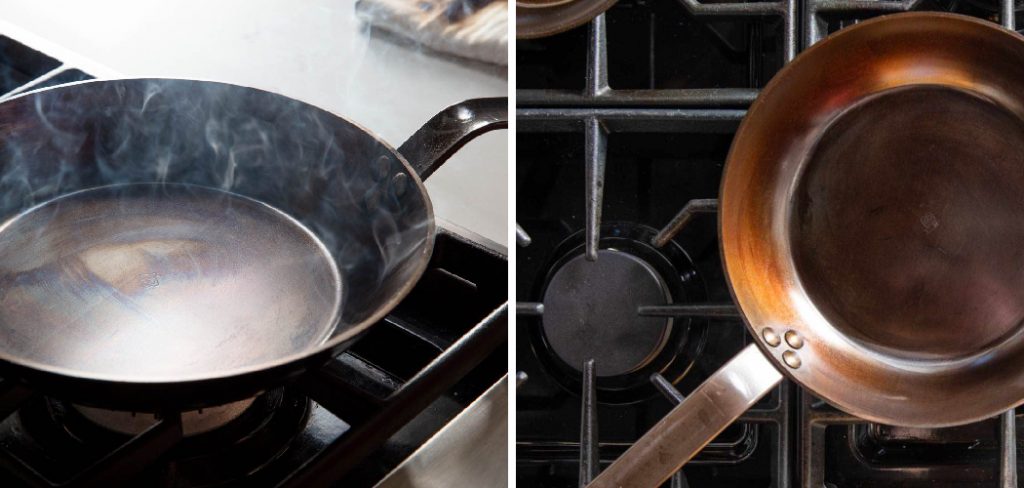
Carbon steel pans are prized for their durability, heat retention, and ability to achieve a perfect sear, but they require seasoning to prevent rusting and create a slick cooking surface. The oven method offers a convenient and effective way to season the pan evenly.
To begin, thoroughly clean the pan to remove any factory coatings or residues. Then, apply a thin layer of oil, such as flaxseed or vegetable oil, to the entire surface of the pan, including the handle.
Place the pan upside down in a preheated oven and bake it at a high temperature, typically around 400-450°F (200-230°C), for an hour or more.
This process polymerizes the oil, creating a durable, non-stick coating. This guide provides detailed instructions on how to season a carbon steel pan in the oven, ensuring optimal cooking performance and longevity.
Importance of Seasoning Carbon Steel Pans
Seasoning carbon steel pans is essential for several reasons. First and foremost, it creates a natural non-stick surface that improves with each use, making cooking and cleaning much easier. A well-seasoned pan allows for better food release, enabling you to cook delicate items like eggs or fish without them sticking to the surface.
Additionally, seasoning your pan helps prevent rust, a common issue with carbon steel if not properly maintained. The process of seasoning fills in the microscopic pores on the pan’s surface, forming a protective layer that guards against moisture and oxidation.
Moreover, a seasoned carbon steel pan can significantly enhance the flavor of your dishes, as the seasoning layer absorbs and retains subtle nuances from the oils and foods cooked in it over time. Therefore, regular seasoning is crucial to maximize the performance, longevity, and culinary benefits of your carbon steel pan.
Advantages of Oven Seasoning Method
Opting to season your carbon steel pan in the oven offers numerous advantages. One of the most significant benefits is the even distribution of heat, which ensures that the oil is uniformly polymerized across the entire surface of the pan. This consistency is difficult to achieve with stovetop seasoning, where the heat application can be uneven.
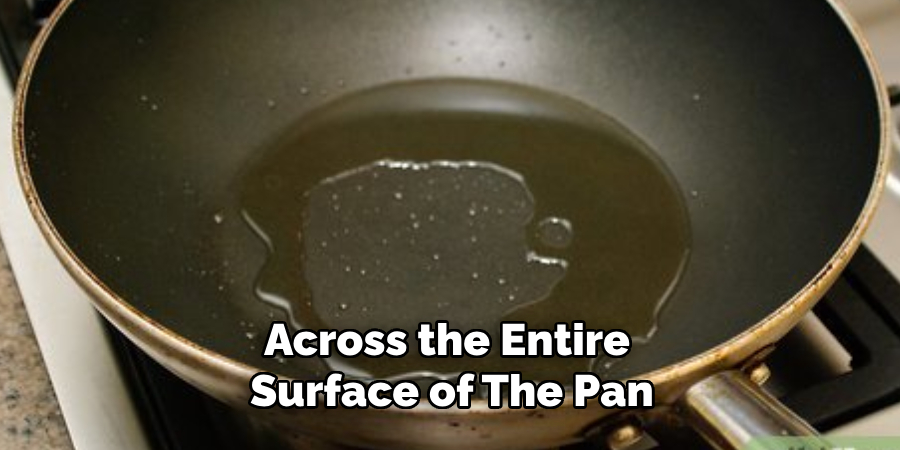
The oven method also allows for a more hands-off approach; once the pan is placed in the oven, it requires minimal supervision, freeing you up to attend to other tasks. Additionally, seasoning in the oven can be more efficient when you have multiple pans to season simultaneously, as you can place several pans in the oven at once.
This method also helps avoid the accumulation of excessive oil, which can occur with stovetop seasoning and lead to a sticky or gummy residue. Ultimately, the oven seasoning method simplifies the process, providing a consistent and durable non-stick coating that enhances the usability and longevity of your carbon steel pan.
Purpose and Structure of the Article
The purpose of this article is to provide a comprehensive guide on how to properly season a carbon steel pan using the oven method.
By understanding the significance of seasoning and following the correct steps, readers can ensure their carbon steel pans achieve optimal non-stick performance, longevity, and enhanced culinary results. This article is structured to offer clear, step-by-step instructions, along with detailed explanations of the benefits and advantages of the oven seasoning method.
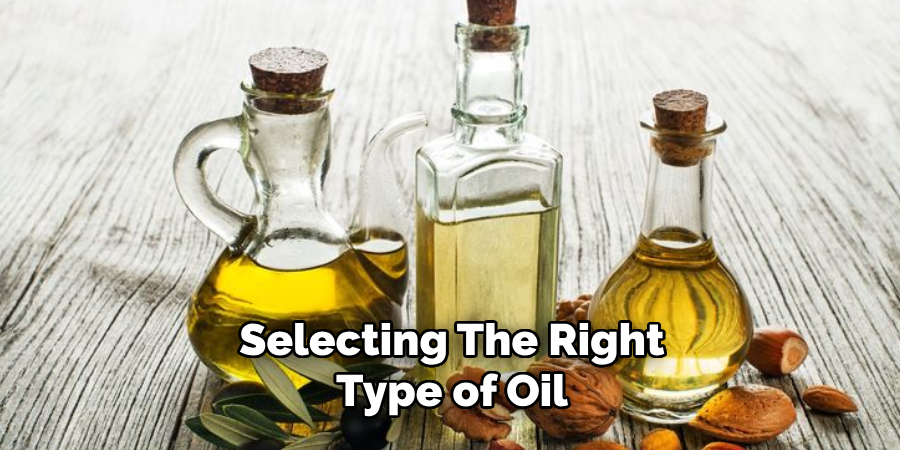
First, we cover the initial preparation steps, emphasizing the importance of thoroughly cleaning the pan and selecting the right type of oil.
Next, we delve into the detailed process of seasoning in the oven, including temperature settings and time requirements. Following this, we discuss the benefits of a well-seasoned pan, such as improved cooking performance, easier cleaning, and rust prevention.
Finally, we address common issues and troubleshooting tips to ensure readers can achieve the best results. This structured approach ensures that both novice and experienced cooks can confidently season their carbon steel pans and enjoy the many benefits they offer.
Understanding Carbon Steel Pans
Carbon steel pans are a unique and versatile addition to any kitchen, offering numerous advantages that make them a favorite among professional chefs and home cooks alike. These pans are made from an alloy of iron and carbon, which gives them a lighter weight compared to cast iron pans while still retaining excellent heat conductivity and durability.
The material composition allows carbon steel pans to heat up quickly and evenly, making them ideal for high-heat cooking techniques such as searing, sautéing, and stir-frying.
In addition to their outstanding heat management, carbon steel pans are incredibly durable and can withstand heavy use without warping or degrading. This makes them perfect for both stovetop and oven cooking.
Their versatility doesn’t end there; carbon steel pans naturally develop a non-stick patina over time through the seasoning process, enhancing their cooking performance and making them easier to clean.
Another notable characteristic of carbon steel pans is their ability to achieve and maintain high temperatures, which is crucial for certain culinary techniques.
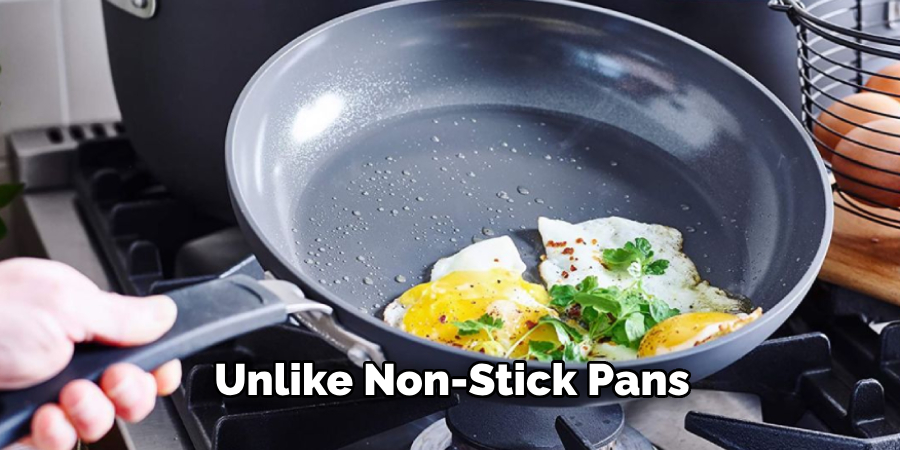
Unlike non-stick pans, which can release harmful fumes when overheated, carbon steel pans are safe to use at high temperatures and are ideal for tasks that require intense heat, such as browning meat or achieving a perfect crust on a steak.
It’s also worth mentioning that carbon steel pans are incredibly versatile when it comes to cooking different types of cuisines.
From making delicate crepes to hearty one-pan dinners, carbon steel can handle it all. However, they do require a bit more maintenance than some other types of cookware. Regular seasoning and proper cleaning are essential to maintain their non-stick properties and prevent rust.
Importance of Seasoning in Carbon Steel Cookware
Seasoning is a critical process for maintaining carbon steel cookware, providing numerous functional and culinary benefits. The practice of seasoning involves coating the surface of the pan with a thin layer of oil and heating it to a point where the oil polymerizes, forming a hard, non-stick layer.
This layer serves several important purposes. First, it creates a slick cooking surface, which becomes increasingly non-stick with each use, allowing for effortless food release and making cooking more enjoyable. This is particularly beneficial for preparing delicate foods that have a tendency to stick, such as eggs and fish.
In addition to improving cooking performance, seasoning acts as a protective barrier against rust. Carbon steel is prone to oxidation, but the seasoning layer prevents moisture from coming into contact with the metal, thereby reducing the risk of rust formation. This protection is crucial for extending the lifespan of the cookware, helping to ensure that your pan remains in top condition for years to come.
Moreover, seasoning can enhance the flavor of your dishes. The seasoned layer absorbs oils and flavors from the foods cooked in it, creating a unique patina that adds depth and complexity to your meals. This seasoned patina becomes more pronounced over time, continuously improving the performance and flavor output of the pan.
Regular seasoning is also vital for maintaining the appearance of the pan. A well-seasoned carbon steel pan develops a beautiful, dark patina, which not only indicates a high-performing cooking surface but also adds an aesthetic appeal to your kitchen.
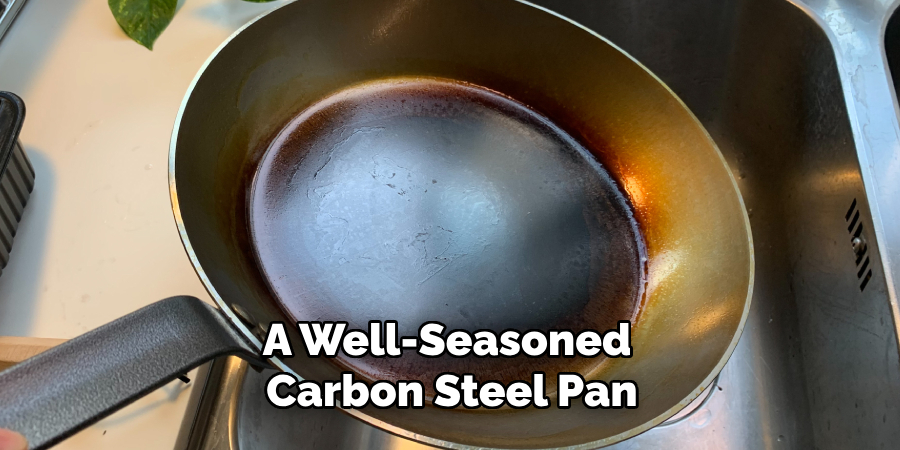
In summary, the seasoning process is essential for optimizing the non-stick properties, protecting against rust, enhancing flavors, and maintaining the visual appeal of carbon steel cookware. Therefore, taking the time to season and re-season your carbon steel cookware as needed is a worthwhile investment in both its longevity and your culinary success.
10 Methods How to Season a Carbon Steel Pan in the Oven
1. Preparing the Pan:
Before seasoning your carbon steel pan, it’s essential to wash it thoroughly with hot, soapy water to remove any manufacturing residues or impurities. Use a scrub brush or sponge to gently scrub the surface and rinse it clean. Once washed, dry the pan thoroughly with a clean cloth or paper towel to remove any moisture.
2. Choosing the Right Oil:
Selecting the right oil is crucial for seasoning your carbon steel pan effectively. Opt for oils with a high smoke point, such as vegetable oil, grapeseed oil, or flaxseed oil, as they can withstand the high temperatures required for seasoning without burning or imparting unwanted flavors to the pan. Avoid using oils with low smoke points, such as olive oil or butter, as they may result in a sticky or uneven seasoning layer.
3. Applying the Oil:
To apply the oil to your carbon steel pan, pour a small amount onto a clean cloth or paper towel and spread it evenly over the entire surface of the pan, including the bottom, sides, and handle.
Ensure that the oil layer is thin and uniform, as excess oil can lead to a sticky or blotchy seasoning. Alternatively, you can use a brush or your fingers to coat the pan evenly with oil, making sure to reach all the crevices and corners.
4. Wiping Off Excess Oil:
After applying the oil, use a clean cloth or paper towel to wipe off any excess oil from the surface of the pan. The goal is to create a thin, even layer of oil that will polymerize during the seasoning process to form a durable non-stick coating. Removing excess oil helps prevent the formation of sticky or gummy spots on the pan’s surface.

5. Placing the Pan in the Oven:
Once the pan is evenly coated with oil and excess oil has been wiped off, it’s time to place it in the oven for seasoning. Preheat your oven to the recommended temperature for seasoning carbon steel pans, typically between 400°F to 450°F (200°C to 230°C).
Position the pan upside down on the middle rack of the oven to allow any excess oil to drip off during the seasoning process.
6. Heating the Pan:
Allow the pan to heat in the oven for approximately one hour to ensure thorough seasoning. During this time, the oil will polymerize, creating a durable, non-stick coating on the pan’s surface.
Keep an eye on the pan during the heating process to ensure that it does not overheat or smoke excessively. If you notice any smoke, reduce the oven temperature slightly to prevent burning.
7. Cooling the Pan:
After the designated seasoning time has elapsed, turn off the oven and allow the pan to cool completely inside the oven. Avoid removing the pan from the oven while it is still hot, as this can cause the seasoning layer to crack or flake off prematurely.
Allowing the pan to cool gradually helps ensure a strong and durable seasoning that will last for many uses.
8. Repeating the Process:
For optimal results, it’s recommended to repeat the seasoning process multiple times to build up a robust seasoning layer on your carbon steel pan.
After the initial seasoning, allow the pan to cool completely, then repeat the oil application, heating, and cooling steps two or three times, or until the desired level of seasoning is achieved. Each additional seasoning cycle helps enhance the pan’s non-stick properties and durability.
9. Testing the Seasoning:
Once the pan has cooled completely, it’s essential to test the seasoning to ensure that it has formed a strong and durable non-stick coating. To do this, pour a small amount of water into the pan and observe how it behaves.
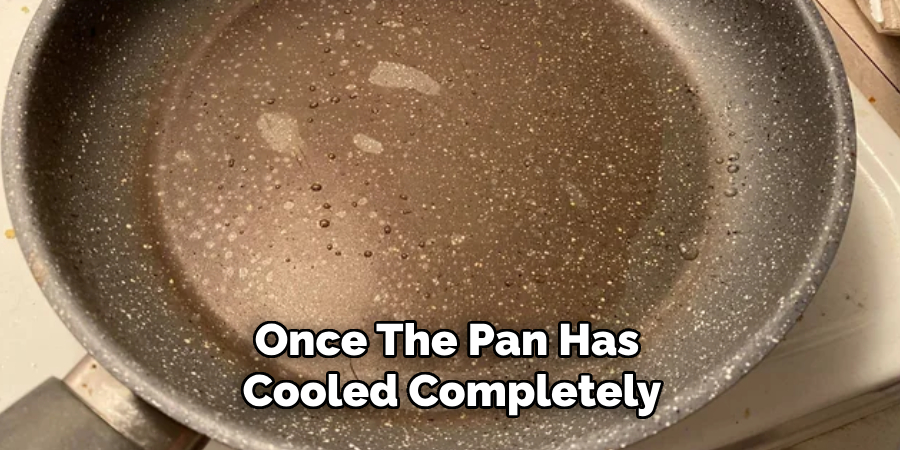
A well-seasoned pan will cause the water to bead up and roll around the surface, indicating that the seasoning layer is intact and functioning effectively. If the water spreads out or forms puddles, it may be a sign that the seasoning needs to be reinforced with additional seasoning cycles.
10. Maintaining the Seasoning:
To maintain the seasoning on your carbon steel pan and ensure its longevity, it’s essential to use proper cooking and cleaning techniques. Avoid using metal utensils or abrasive cleaners that can scratch or damage the seasoning layer.
Instead, opt for wooden or silicone utensils and gentle cleaning methods such as hand washing with mild soap and warm water. After each use, dry the pan thoroughly and apply a thin layer of oil to help preserve the seasoning and prevent rusting.
Things to Consider When Seasoning a Carbon Steel Pan
- Ventilation:
Ensure that your kitchen is well-ventilated before starting the seasoning process. The high temperatures required for seasoning can produce smoke, so it’s a good idea to open windows or use exhaust fans to maintain proper airflow and minimize any discomfort caused by smoke.
- Temperature Control:
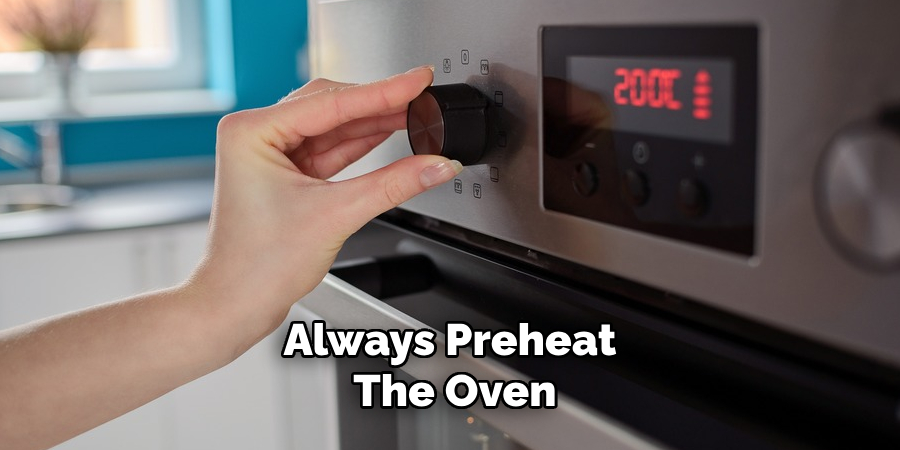
Monitoring and maintaining the correct oven temperature is crucial. Overheating the pan can damage the seasoning layer or cause excessive smoke. Always preheat the oven to the recommended temperature range (400°F to 450°F or 200°C to 230°C) and keep an eye on the pan during the process.
- Even Oil Distribution:
Applying an even and thin layer of oil is essential for achieving a uniform seasoning. Excess oil can result in a sticky or uneven surface, while too little oil may not create a robust non-stick coating. Be meticulous in spreading the oil and wiping off any excess before placing the pan in the oven.
- Type of Oil:
While oils with high smoke points like vegetable oil, grapeseed oil, and flaxseed oil are recommended, it’s also essential to note that different oils can impart slight variations in the seasoning’s color and texture. Selecting a neutral-flavored oil helps avoid unwanted taste alterations in your food.
- Pan Placement:
Positioning the pan upside down in the oven is a commonly recommended practice, as it facilitates the dripping off of any excess oil, preventing the formation of sticky spots. Additionally, placing a baking sheet or aluminum foil on the lower rack can catch any dripping oil, keeping your oven clean.
- Patience and Repetition:
Seasoning is not a one-time process but rather an ongoing task to build up a durable non-stick layer. Be patient and prepared to repeat the seasoning steps multiple times to achieve the best results. Good seasoning is built gradually and can be enhanced with every use of the pan.
- Regular Maintenance:
Maintaining the seasoning entails using appropriate cooking and cleaning techniques. Avoiding harsh detergents, using soft cleaning tools, and performing occasional touch-up seasoning will help extend the life and performance of the non-stick surface.
By keeping these considerations in mind, you can ensure a successful seasoning process, resulting in a high-performing, long-lasting carbon steel pan that enhances your cooking experience.
Conclusion
By following these ten detailed methods, you can effectively season your carbon steel pan in the oven to create a durable, non-stick surface that enhances your cooking experience. With proper seasoning and maintenance, your carbon steel pan will become a versatile and reliable kitchen tool that can handle a wide range of cooking tasks with ease.
Hopefully, this article gave you some helpful tips about how to season a carbon steel pan in the oven successfully, so now that you have the proper knowledge on how to get the job done, why not give it a try today?
Edmund Sumlin is a skilled author for Metal Fixes, bringing 6 years of expertise in crafting a wide range of metal fixtures. With a strong background in metalwork, Edmund’s knowledge spans various types of fixtures, from decorative pieces to functional hardware, blending precision with creativity. His passion for metalworking and design has made him a trusted resource in the industry.
Professional Focus:
- Expert in Metal Fixtures : Edmund aesthetic specializes in creating durable and innovative metal fixtures, offering both appeal and functionality. His work reflects a deep understanding of metalworking techniques and materials.
- Sustainability Advocate : He is dedicated to using sustainable practices, ensuring that every fixture is crafted with eco-friendly methods while maintaining high-quality standards.
In his writing for Metal Fixes, Edmund provides valuable insights into the latest trends, techniques, and practical advice for those passionate about metal fixtures, whether they are professionals or DIY enthusiasts. His focus on combining artistry with engineering helps others discover the true potential of metal in design.


